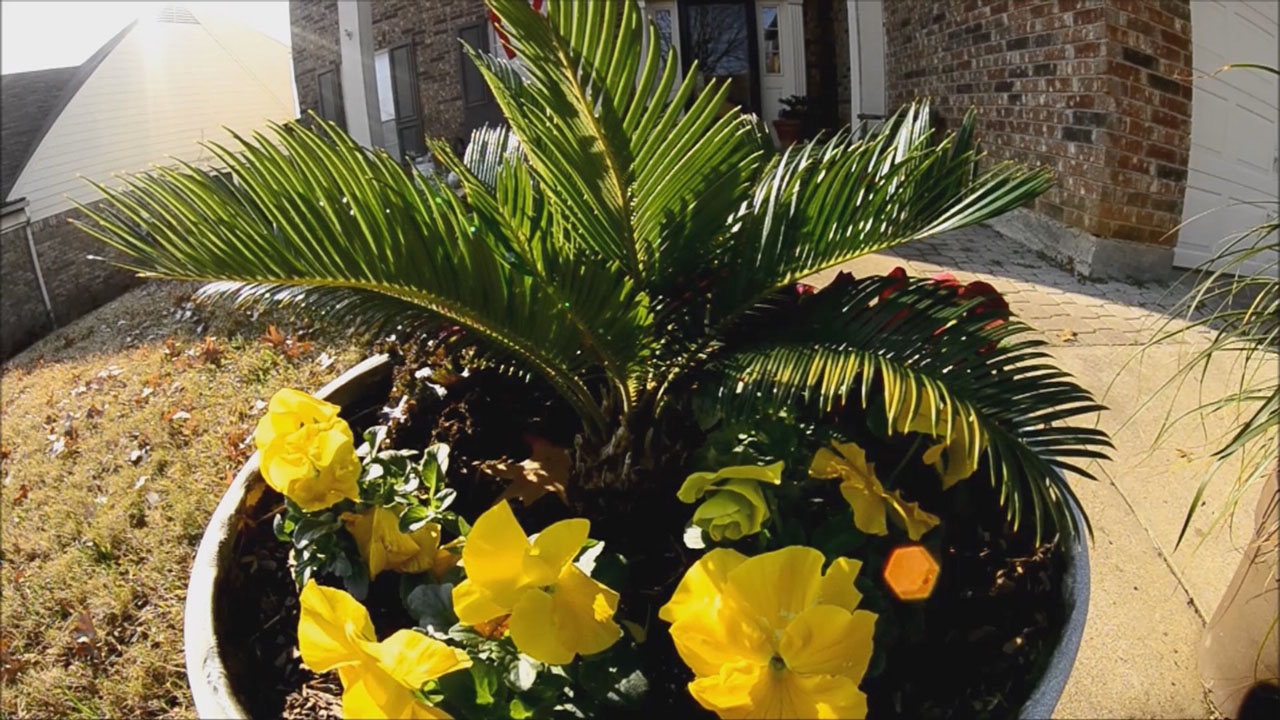DALLAS -- A common household plant is killing dogs in Texas, and the worst part is, many pet owners have no idea of the danger.
One North Texas dog owner learned the hard way.
“We all know most likely we aren’t going to outlive our dogs, but nobody is prepared to say goodbye to their dog that they love this much after just one year,” said Molly Tuttle of Dallas. “That was just really sad.”
Tuttle rescued Sydney a year ago. The Weimaraner-bulldog mix came from a puppy mill where she was bred as a bait dog in a dog-fighting operation, Tuttle said.
Sydney was the lone survivor of that mill – until a plant in Tuttle’s backyard ended her life.
“I noticed she’d been chewing on the root a little bit [and] took it away from her,” Tuttle said. “[I] didn’t notice any behavioral differences until later that night.”
Sydney began vomiting and the next morning was still lethargic. Tuttle took her to the vet.
“Her liver values were climbing up,” said Dr. Jean Rifkin, who treated Sydney. “I did additional tests and she wasn’t able to clot blood at all.”
At first, neither the vet nor Tuttle could identify what was wrong.
“They kept on asking me more questions - could she have gotten in to rat poisoning? Stuff like that. The answer to everything was ‘No,’” she said. “The next morning, they asked ‘Could she have gotten into Sago palm?’ I said, ‘What’s Sago palm?’”
Tuttle said she had no idea what a Sago palm was, or that the previous homeowners had planted some in her backyard.
It’s a plant, and in Texas, Sago palms are not hard to find.
These Jurassic Park-like plants are found readily available in major home and garden stores. Sago palm has several names, but its scientific name is “cycas revoluta.” Sometimes, it’s just labeled “palm” in stores, depending on the seller.
Sago palms are popular in Texas because they require a warm climate, they’re low maintenance, affordable and come in a variety of sizes, both indoor and outdoor. They’re also highly toxic.
“It’s deadly – 50 percent of the cases can die,” Rifkin said.
Once you start noticing symptoms, it’s often too late, she said.
“If you know your dog has gotten into [Sago palm], they need to be seen immediately,” Rifkin said. “If you see them chewing on it, they have to be seen because those dogs are going to have a better chance of surviving than the dogs who are 24 or 48 hours into [showing symptoms] already.”
Sydney lasted longer than most dogs, but after two weeks and $10,000 of care, it was over. Sydney’s liver failed and she died.
She’s not alone.
A Google search reveals countless stories of Sago palm pet poisonings. Some children have also gotten sick.
Michael Yudizky, a spokesperson from the North Texas Poison Control center, said when consumed, Sago palm has effects similar to cyanide.
“If a human ingests a portion of the plant – root, leaf or berry – they may feel light-headed, nauseous or even pass out temporarily,” he said.
News 8 found Sago palm plants readily available in Dallas-area stores and online. Our research found that Home Depot was the only seller to have warning labels on the plants on their shelves. A spokesperson there said they began labeling plants that are toxic to animals a few years ago following complaints from customers.
Most stores News 8 talked to were unaware of the danger.
That’s not the case, however, with Sago palm growers.
Florida-based Costa Farms bills itself as one of the largest growers of household plants supplying major home and garden stores in the United States.
The company’s website warns: “Sago Palm is poisonous so keep it out of reach of toddlers and pets.” But that warning is not making it onto the plants, into the stores and in front of consumers.
Why?
Currently, there is no government agency responsible for placing warning labels on plants, despite the toxicity to pets and humans, said a spokesperson from the U.S. Department of Agriculture. A warning label would be voluntary, officials said.
News 8 contacted Costa Farms to ask why the company does not put a warning to consumers before distribution. A spokesperson declined to answer that question.
Dallas trial attorney Brad Kizzia said the Consumer Product Safety Commission’s process for requiring a warning label is cumbersome, if it requires one at all.
“If the CPSC doesn’t take action, it often does require a lawsuit against the company to get them to do something,” Kizzia said. “It’s a sad truth, but until enough dogs die, nothing will probably happen.”
Sago palm exposures are frequent in Texas according to the Pet Poison Helpline, which is a division of SafetyCall International.
Since 2009, SafetyCall has received 400 calls about dogs exposed to Sago palm. About 25 percent of cases are from Texas; almost all required emergency vet care, a website representative said.
Sago palms are found in backyards across Texas, and the vast majority of homeowners who let their dogs run loose in those yards have no idea of the dangers, experts say.
“We should know when something in our very own backyard is going to possibly kill [our pets],” said Katie Jarl, Texas director of the Humane Society of the United States. “It’s just going to take responsible pet owners and people going out to these home and garden stores to demand change.”
Colleen O’Brien, national spokeswoman for People for the Ethical Treatment of Animals in Washington D.C., agrees that the burden lies with the consumer.
“Before buying house plants or flowers, anyone with animals should do some research to make sure that they aren’t poisonous,” O’Brien said. “Easter lilies, mistletoe and holly, for example, are all poisonous to dogs.”
Other outdoor plants that pose a threat to dogs are azaleas, daffodils, and foxtails, whose barbed bristles can get into animals’ eyes, ears, and noses and migrate through their bodies, causing deadly infections and tissue damage, she said.
Veterinarians also warn pet owners about xylitol, a natural ingredient commonly found in sugar-free gum now being used in some nut butters. Vets say a small dose can cause acute liver failure in dogs.
Three health food brands -- Nuts ‘N More, Krush Nutrition and P-28 Foods – all make protein-infused nut butters containing xylitol. These brands are found online or at health and wellness stores like GNC and Vitamin Shoppe.
While the U.S. Food and Drug Administration is aware of xylitol’s danger to animals (it is safe for humans), a warning label alerting consumers is not required because the product is meant for humans – not animals.
“How many people are going to the FDA website on a regular basis finding out what is dangerous for their pets? It needs to be front and center,” said veterinarian Jason Nicholas, a national pet safety advocate whose site PreventiveVet.com offers information and safety advice for pet owners.
“You can either be part of the problem or you can be part of the solution,” Nicholas said. “The companies that are producing Sago palms, they’re not ignorant to the dangers, they’re not unaware of the dangers. They’re just choosing not to do anything.”
WHAT ARE THE SYMPTOMS?
How do you know if your dog has been poisoned by Sago palm?
Here are some common symptoms, according to the American Society for the Prevention of Cruelty to Animals:
- Vomiting
- Dark, sticky, bloody stool
- Bloody diarrhea
- Jaundice (yellowing) of eye, gum or ear flap
- Increased thirst
- Bruising
- Coagulopathy, or lack of blood clotting
If left untreated, liver damage or liver failure results, followed by death. Get help as soon as possible.
WHO CAN YOU CALL?
The ASPCA Animal Poison Control Center hotline is staffed all hours and can be reached at 888-426-4435. A $65 fee may apply.
There are several Dallas-area pet emergency services available.
OTHER RESOURCES
Here is a list of common household products that are poisonous to pets.
Want to give your dog a treat? Here are some foods to avoid feeding your pet.


